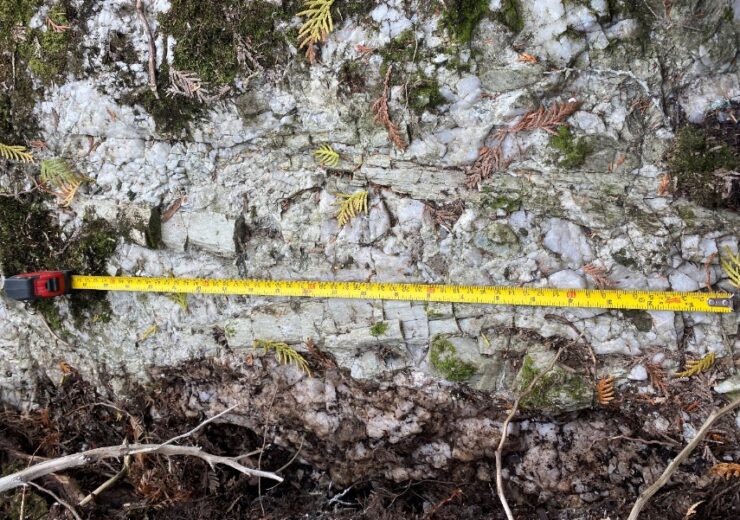Tearlach, a member of the TSX Venture 50, is a Canadian exploration company engaged in acquiring, exploring, and developing lithium projects

Green spodumene crystals up to 20 cm wide and 30 cm long. (Credit: Tearlach Resources Limited)
Tearlach Resources Limited (TSXV: TEA) (OTCQB: TELHF) (FRANKFURT: V44) (“Tearlach” or the “Company”) is pleased to announce the discovery of spodumene, the main ore for lithium, on its Georgina Properties in northern Ontario. The spodumene-bearing pegmatite, which we have named “Riches Pegmatite,” is the first to be discovered on the property and provides the Company with a clear path and defined targets for ongoing work in the area. Tearlach will continue to explore the asset to identify further pegmatites and continue to seek additional mineralization throughout the property.
Dr. Selway, VP of Exploration, said, “The discovery of spodumene and pegmatite was the highlight of our 2023 summer exploration program. Once the geology team found the beryl in outcrop on Beryl Island, I knew that we were very close to finding spodumene. The grade and extent of the spodumene in the outcrop justifies a winter drill program.”
Samples 889574, 889563 and 889573 are mineralogical samples of pure spodumene. Visual estimates of spodumene contents in the Riches pegmatite does not necessarily equate to Li2O % assays. Additional assays are pending. Grab samples are selective in nature and may not represent the average composition of the spodumene pegmatite.
Once Tearlach’s geology team discovered beryl on Beryl Island and Nb-Ta oxides on Oxide Island on Park’s Lake (Tearlach press release Oct. 10, 2023), they knew that they were close to finding spodumene. Examination of the abundant outcrop along the Parks Lake peninsula lakeshore led to the discovery of very coarse-grained muscovite books in rare-element pegmatites, and the following day, Riches spodumene pegmatite was discovered (Figure 3). The muscovite book pegmatite zone is the border zone characteristic of the Riches spodumene pegmatite (Figure 4).
Alan Rich, Tearlach senior geologist, first identified the spodumene in the field. In recognition, we name it Riches Pegmatite. Alan was accompanied by Kyle Henderson, Kevin Tran and Richard Kindla during the discovery and Tearlach thanks each of them for their efforts.
Coarse-grained muscovite books have been identified in seven other locations within the rare-element pegmatite zone (Figure 3 and Figure 4). There is a potential that these other seven locations of muscovite books also relate to spodumene pegmatite; however, stripping is required to determine if each of these locations also contains spodumene.
Tearlach’s geology team will cut channel samples of Riches pegmatite and conduct a Trimble GPS survey with real-time satellite CenterPoint correction and ± 2 cm accuracy in the horizontal to prepare for a winter drill program on the pegmatite.
Source: Company Press Release
